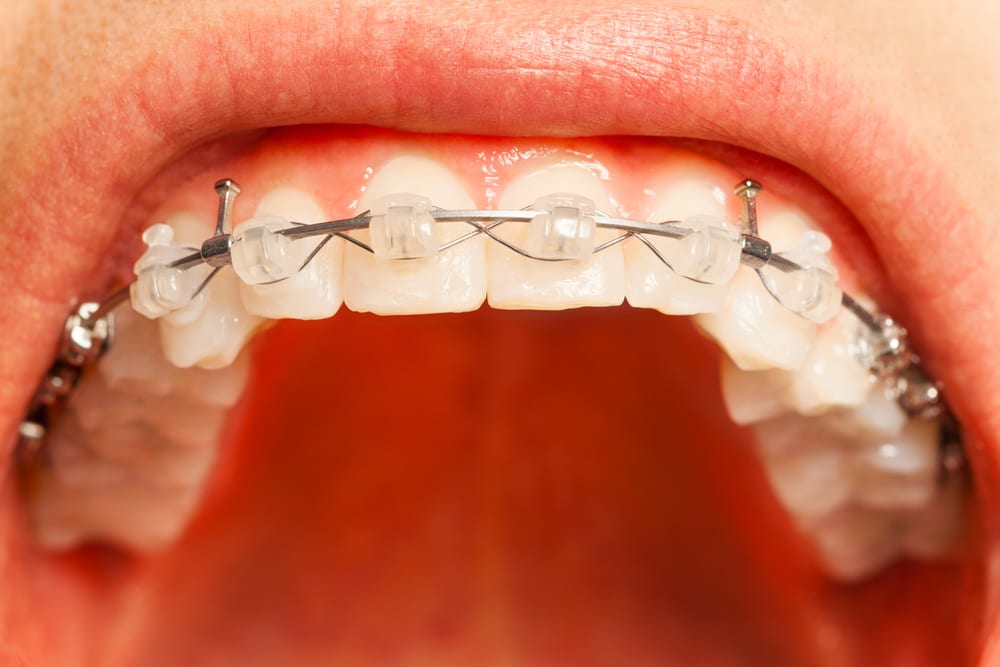
There’s no doubt about it that a lot of new patients and their parents are a little bit overwhelmed when they first begin treatment discussions, and this is mainly because there are a whole range of orthodontic terms that can be rather confusing if you’re not well-acquainted with them.
Understanding these orthodontic terms can help out tremendously when it comes to your questions for Dr. Karpac, and having a basic knowledge of orthodontic terminology will ultimately help put you at ease as you begin this journey.
On this page we’ve compiled seven somewhat confusing orthodontic terms that patients and their parents should know before initiating treatments, including:
- Power-Chains
A Power-chain is a group of connected, elastic strings that attach to brackets to apply an added pressure on top of what the archwire and brackets already accomplish. Power-chains do a wonderful job when it comes to closing up spaces between teeth, and effectively moving crooked teeth around an archwire.
Orthodontic treatment time can be drastically decreased by the use of Power-chains, and they are really effective in terms of closing gaps on a tooth that has been extracted.
- Archwire
The archwire within an orthodontic patient’s braces will do the majority of the work throughout the treatment process, and it technically is the wire that connects all bands and brackets together to assist in teeth alignment. There are different types of archwires, and some are flexible while others are more rigid.
The archwire helps set a patient’s teeth and allows the teeth to be moved around in specific ways, which ultimately leads to beautifully-shaped smiles that fit together!
- Bonding & Banding
These two orthodontic terms go together because they are a two-step process associated with the application of braces. Banding is when an orthodontist places separators in between a patient’s back teeth in order to ensure an adequate amount of spacing to fit a metal band around an entire molar tooth.
Bonding is associated with the actual application of braces and brackets to a patient’s teeth, which is the process of an orthodontist utilizing a plastic-based dental paste to attach braces and brackets to a patient’s teeth. When your brackets and braces are efficiently bonded to your teeth, we’ll utilize a high-density light to cure the paste so it lasts for the entirety of your treatment.
- Expanders
A palatal expander is an orthodontic tool that we’ll typically utilize with growing children who happen to have crowded teeth and a narrow upper jawline. The expander essentially will expand a patient’s palatal circumference to simultaneously expand the arch’s perimeter. This provides more space for teeth to properly shift by providing a patient with an increased smile width.
Expanders are always custom-made for each patient to perfectly fit into the roof of their mouth.
- Temporary Anchor Devices (TADS)
A temporary anchor device is a small piece of titanium that we’ll utilize to attach to a patient’s bone during treatment, and these TADS are typically necessary when a patient doesn’t have a practical tooth to use as an anchor, or if any specific anchor tooth is at a high risk of moving.
TADS are only utilized for short periods of time during a patient’s treatment, and their main purpose is to help keep teeth in their proper positions. TADS are great orthodontic tools that help decrease a patient’s overall treatment time, and they also can help eliminate the overall need for elastic bands, increase tooth movement possibilities, and can assist in addressing any particular oral issues from past surgeries.
- Fixed Bite Correctors
Fixed bite correctors are orthodontic appliances that help fix any incongruencies between the lower and upper jaws, and these are typically only utilized when a patient has certain bite issues. Bite problems can also be treated with the use of certain elastics.
These appliances will typically remain in a patient’s mouth for about 6-12 months.
- Molar Distalizers
Molar distalizers are orthodontic devices that help shift molar teeth back into a patient’s arch in order to create an adequate amount of space for all the other teeth.
There are other appliances that effectively move molars, but molar distalizers tend to be the most efficient and least time consuming.
Contact Dr. Karpac and Our Dublin or Gahanna Offices to Schedule Your Initial Consultation!
We know that preparing for orthodontic treatment is a bit stressful for both patients and their parents, and we hope that this article helps clarify any technical terminology questions you may have in terms of what orthodontic treatments many times entail.
Contact us today to schedule your initial consultation with Dr. Karpac so we can let you know what to expect with your orthodontic treatment journey, and begin the first steps towards a beautiful smile!

